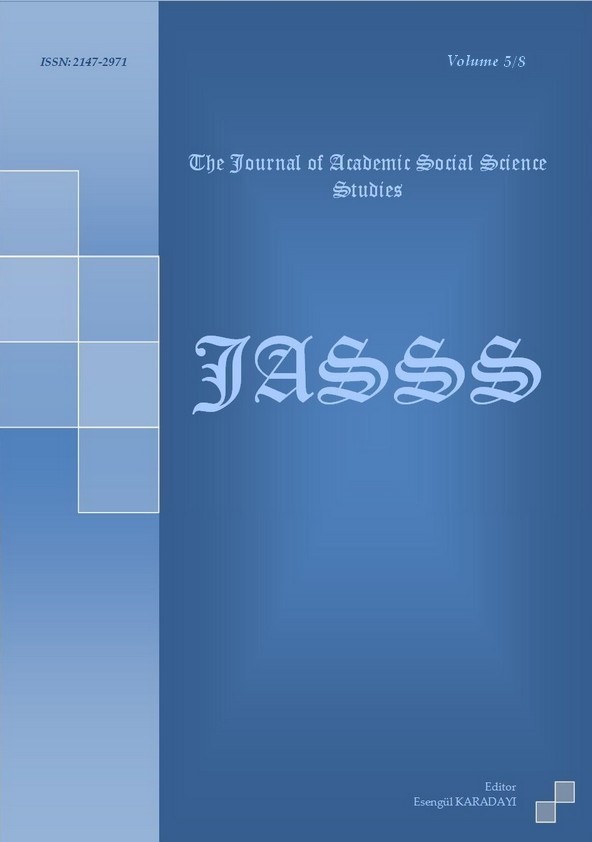Author :
Abstract
Dünya üzerinde son on yıllarda yaşanan demografik gelişmeler, şehir konusunun “Dünya Şehir-Sistem” çerçevesinde ela alınmasını zorunlu kılmıştır. Yaklaşık olarak, 2000 yılından itibaren Dünya nüfusunun yarıdan fazlası şehirlerde yaşamaya başlamıştır. Günümüz itibariyle dünya nüfusunun yarıdan fazlasının şehirlerde yaşadığı bu mekânlarda insanların benzer beşeri örgütlenmelere girdikleri, benzer üretim ve tüketim süreçlerine tabi oldukları, benzer biçimlerde sınırlar ötesi çevreyi kirlettikleri ve benzer yöntemlerle bu kirlenme ile devlet sınırlarını aşan bir mücadeleye giriştikleri hesaba katılırsa, şehir konusunun bir “Dünya Şehir-Sistem” çerçevesinde ele alınması gerektiği kendiliğinden ortaya çıkacaktır. Bugün dünya üzerinde 200 kadar devlet bulunmaktadır. Bunların aralarında başta siyasi, sosyal ve ekonomik olmak üzere çeşitli ilişkiler mevcuttur. Bu ilişkilere bakılarak, dünya üzerinde uluslar arası bir sistemden bahsedilebilmektedir. Bugün dünya üzerinde 500 kadar milyonluk şehir bulunmaktadır. Bunların birçoğu arasında da benzer ilişkiler mevcuttur. Bu dönüşüme bakılarak, bugün bir Dünya Şehir-Sistem’den bahsetmek mümkün hale gelmiştir. Nitekim 1990’lardan itibaren çeşitli isimler altında bu konu işlenmektedir. “Dünya Şehir-Sistem” yaklaşımı da son on yılların ürünü bir yaklaşımdır. Bu yaklaşımda özellikle belli ekonomik, enformatik ve kültürel özelliklere sahip şehirlerin etkileşim halinde olduğu bir ‘sistem’ kapsamında düşünülmesi söz konusudur. Konuyla ilgili makale ve kitap yazan belli başlı isimlerden bazıları Peter J. Taylor, G. Catalano, D. R. F. Walker, David A. Smith, Michael Timberlake, Jeffrey Kentor, Roberto Capello, gibi az sayıdaki şehirleşme uzmanı ve akademisyendir.
Keywords
Abstract
Demographic changes of last decades about the city made it necessary to handle this subject in terms of world-city system. Since 2000, almost more than the half of world’s population have been living in the cities. The cities should be taken into consideration as a whole together with all cities of the world. As most of the world’s population live in the cities and the human being share similar organizations in these cities, similar production and consumption processes, similar types of international pollutions, similar transfrontier fight against the environmental pollution all necessitates a “world city-system” for the issues of the city. There are about 200 cities on the world today. Among them, there are various relations especially in politic, economical and social life spaces. According to these relations, it is accepted that there is an international system on the world. Today, there are about 500 cities contains at least 1 million people on the world. The majority of them also have similar relations between themselves. According to this transformation, it is possible to talk about a “World City-System”. Thus, the subject has been studying since 1990’s, under various titles. In this approach, the cities which share similar economic, informatics, and cultural characteristics are examined within an interactive “system”. Some of the authors of related articles and books of limited number of experts and academics are; Peter J. Taylor, G. Catalano, D. R. F. Walker, David A. Smith, Michael Timberlake, Jeffrey Kentor, Roberto Capello.
Keywords
- SWINGEWOOD., Alan, 1998. Sosyolojik Düşüncenin Kısa Tarihi, Çev. Osman Akınhay, Ankara, Bilim ve Sanat Yayınları.
- ALDERSON, Arthur S. and Jason BECKFİELD, 2004. “Power and Position in the World City System”, American Journal of Sociology, Vol. 109, No. 4, pp. 811-851.
- BEAVERSTOCK, J.V., R.G.SMİTH and P.J.TAYLOR, 1999. “A Roster of World Cities”, Cities, Vol. 6, pp. 445-458.
- BEAVERSTOCK, J.V., R.G.SMİTH and P.J.TAYLOR, 2000. “World City Network: A New Metageograph?”, Annals of Association of American Geoghraphers, 90, (1), 2000, pp. 123-124.
- CASTELLS, Manuel, 1989. The Information City: Information Technology, Economic Restructuring, and the Urban-Regional Process, Oxford: Blackwell.
- CASTELLS, Manuel, 1996. The Rise of the Network Society, Cambridge, Blackwell.
- CLARK, David, 1996. “The Future Urban World” The City Reader, Ed. by Richard T. Le Gates and Frederic Staut, Routlage.
- FRİEDMANN, John, 1986. “The World City Hypothesis”, Development and Change, 4, pp. 12-50.
- GAWC, 2000. “Classification of Cities 2000” Available online at: http://www.lboro.ac.uk/gawc/world2000.html, Accessed on March 30, 2010.
- GAWC, 2008.“Classification of Cities 2008”, Available online at:http://www.lboro.ac.uk/gawc/world2000t.html, Accessed on: March 30, 2010.
- HALL, Peter, 1966. World Cities, New York: McGraw-Hill.
- KENNEDY, Paul, 1996. Yirmi Birinci Yüzyıla Hazırlanırken, Çev. Fikret Uccan, İstanbul: İş Bankası Yayınları.
- Population Reference Bureau, “Human Population, Urbanization”, online at: http://www.prb.org/Educators/TeachersGuides/HumanPopulation/Urbanization.aspx , Accessed on: March 30, 2010.
- SASSEN, Saskia, 1991. The Global City: New York, Tokyo and London, NJ: Princeton University Pres.
- SATTERTHWAITE, David, 2005. “The Ten And A Half Myths That May Distort The Urban Policies of Governments And International Agencies”, online at:
- www.ucl.ac.uk/dpu-projects/21st_Century/myths/pdf%20myths/Myths_comlete_doc.pdf , Accessed on: February 10, 2010.
- SHORT, John R., C. BREİTBACH, S. BUCKMAN and J. ESSEX, 2000. “From World Cities to Gatewey Cities”, City, 4, pp. 317-340.
- SMITH D. A. and Michael TİMBERLAKE, 1995. “Conceptualising and Mapping the Structure of the World System‟s City Sytem”, Urban Studies, Vol. 32, No. 2, pp. 287-302.
- TAYLOR, P.J., G. CATALANO and D.R.F. WALKER, 2002. “Measurement of the World City Network”, Urban Studies, Vol. 39, No. 13, pp. 2367-2376.
- TAYLOR, P.J., G. CATALANO and D.R.F. WALKER, 2002. “Exploratory Analysis of the World City Network”, Urban Studies, Vol. 39, No. 13, pp. 2377-2394.
- TAYLOR, P.J., 2001, “Specification of the World City Network”, Geographical Analysis, 33, (2), pp. 181-194. “Urbanization and Global Change-Background Information”
- Online at: http://www.aag.org/hdgc/www/urban/units/unit1/html/1bkground.html , Accessed on: January 05, 2010.
- UN-Habitat, Habitat Backgrounder, “Urbanization: Fackts and Figures”, online at: www.un- habitat.org , Accessed on: March 15, 2010.





